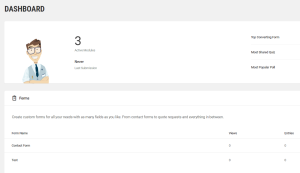In the ever-evolving world of social media platforms, artificial intelligence (AI) bots are becoming increasingly prevalent. However, with this rise comes a new set of challenges for these platforms. AI-generated spam and fake profiles are flooding the feeds, posing threats to the authenticity and integrity of the platforms. As a result, social media companies must adapt and develop new rules to combat these issues.
The Rise of AI-Generated Spam
Social media users are no strangers to spam. However, with the advancements in AI technology, spam attacks have taken on a new form. Generative AI allows for the creation of realistic profiles and videos that can easily go undetected by the platforms’ security systems. These AI-generated spam accounts and content can deceive users and gain significant reach before being removed.
One platform that has recently faced an influx of AI-created spam is TikTok. Videos featuring simulated characters promoting questionable tools, such as an app that claims to remove the clothes of any picture, have emerged. These videos not only undermine the platform’s integrity but also pose risks to users who may unknowingly fall victim to scams or inappropriate content.
The Need for New Rules
To address the growing issue of AI-generated spam, social media platforms must establish new rules and guidelines. TikTok, for instance, has implemented AI-generated content labels to identify and distinguish between real and manipulated media. By clearly disclosing the nature of the content, platforms can help users make informed decisions and avoid falling for deceptive tactics.
While TikTok’s current rules may not explicitly cover all forms of AI-generated spam, it is likely that the platform will expand its guidelines to address these emerging challenges. The distinction between realistic scenes and fake personas promoting harmful apps is a gray area that requires further clarification. Platforms must find ways to differentiate between real and fake people as AI technology continues to advance and create more convincing simulations.
Elon Musk’s Warning and Verification
Elon Musk, the owner of X (formerly known as Twitter), has been vocal about the potential dangers of AI-generated spam. Musk has emphasized the need for verification systems to filter out bot content and prevent the proliferation of deceptive accounts. While there may be debates about the effectiveness of paid verification, the recent examples from TikTok demonstrate the urgency of finding solutions to this problem.
Musk’s concerns are shared by many, and it is expected that other social media platforms will follow suit in implementing new AI content rules. Instagram, for example, is already developing its own AI content labels to address the challenges posed by generative AI. YouTube is also working on tools to combat the anticipated “AI tsunami.” As AI technology evolves, it is crucial for platforms to stay ahead of the curve and continuously adapt their policies.
The Difficulty of Distinguishing Real from Fake
As AI technology progresses, distinguishing between real and fake people becomes increasingly challenging. While some AI-generated content is easy to spot, other examples are incredibly realistic. The line between fact and fiction blurs, and users can easily be deceived by AI-generated profiles and content.
To illustrate this point, consider the example of a simulated video featuring a real person promoting a trash app. While the content may not fall under TikTok’s current guidelines for synthetic or manipulated media, it poses a significant risk to the platform’s integrity. As more poorly scripted, robotic versions of people emerge, the distinction between real and fake becomes even more critical.
The Future of AI Content Rules
The rise of AI bots infiltrating social platforms necessitates the development of comprehensive AI content rules. As platforms like TikTok, Instagram, and YouTube face new challenges, they must adapt their policies to ensure the authenticity and safety of their users.
These AI content rules should focus on transparency and disclosure, requiring clear labeling of AI-generated content. By implementing mechanisms that distinguish between real and fake profiles, platforms can provide users with a more secure and trustworthy environment.
It is crucial for social media companies to collaborate and share knowledge to combat AI-generated spam effectively. By staying ahead of the curve and continually updating their rules, platforms can maintain user trust and mitigate the risks associated with AI bots.
Conclusion
AI bots infiltrating social platforms present new challenges that require immediate attention. The rise of AI-generated spam and fake profiles threatens the authenticity of these platforms, necessitating the development of new rules and guidelines. Platforms like TikTok, Instagram, and YouTube are already taking steps to address this issue, with AI content labels and verification systems.
As AI technology continues to advance, it is crucial for social media platforms to stay vigilant and adapt their policies accordingly. The distinction between real and fake people becomes increasingly difficult, requiring platforms to find innovative ways to protect their users from deceptive content.
By developing comprehensive AI content rules, platforms can maintain the integrity of their platforms and provide users with a secure and trustworthy environment. Collaboration and knowledge sharing among social media companies will be instrumental in combating AI-generated spam effectively. With these measures in place, social platforms can keep up with the evolving landscape and ensure the authenticity of their communities.


No comments! Be the first commenter?